The world of mechanical keyboards continues to explode as more people look to create their own typing platforms. It’s possible to not only choose an already assembled mechanical keyboard without being able to customize it and have a solid companion for your favorite PC games, but one can also dive into the world of custom keyboards without being lost in a torrent of information.
Keychron is one such brand that’s attempting to bridge the gap between the average Joe and the incredibly complex custom keyboard community. The Keychron Q5 is yet another value-focused keyboard that can be purchased as a barebone foundation or a complete package. The choice of three colors and three Gateron G Pro switches make the Q5 quite the contender on paper.
The best keyboards out there don’t just choose the best keycaps and switches. There’s so much more that goes into creating a killer typing machine, including dampening, software support, gasket mounts, and other features usually not found on mechanical keyboards. Such features were reserved for the modding scene, but now more companies are offering keyboards.
So, how does the Keychron Q5 fare for typing words and some gaming?
Keychron Q5: Price, specs, and availability
Keychron makes some premium mechanical keyboards, and the Q5 is no exception. Such keyboards with hot-swappable switches and other parts are generally more expensive than standard assembled affairs. The Keychron Q5 will set you back at least $174.99, depending on the configuration selected.
Windows Central was provided a review sample of the Keychron Q5 in silver gray with the control knob. Some replacement keycaps were also included. This version costs approximately $205.
| Specs | Keychron Q5 |
|---|---|
| Layout | ANSI or ISO |
| Switches | Gateron G Pro |
| Wireless | N/A |
| Ports | One USB-C |
| N-Key rollover | NKRO |
| Compatibility | Windows, Mac, Linux |
| Weight | 2.3 kg |
| Dimensions | 390.4mm x 145mm x 20.2 – 33.4mm |
| Materials | Full CNC-machined aluminum, steel |
Keychron Q5: What I like
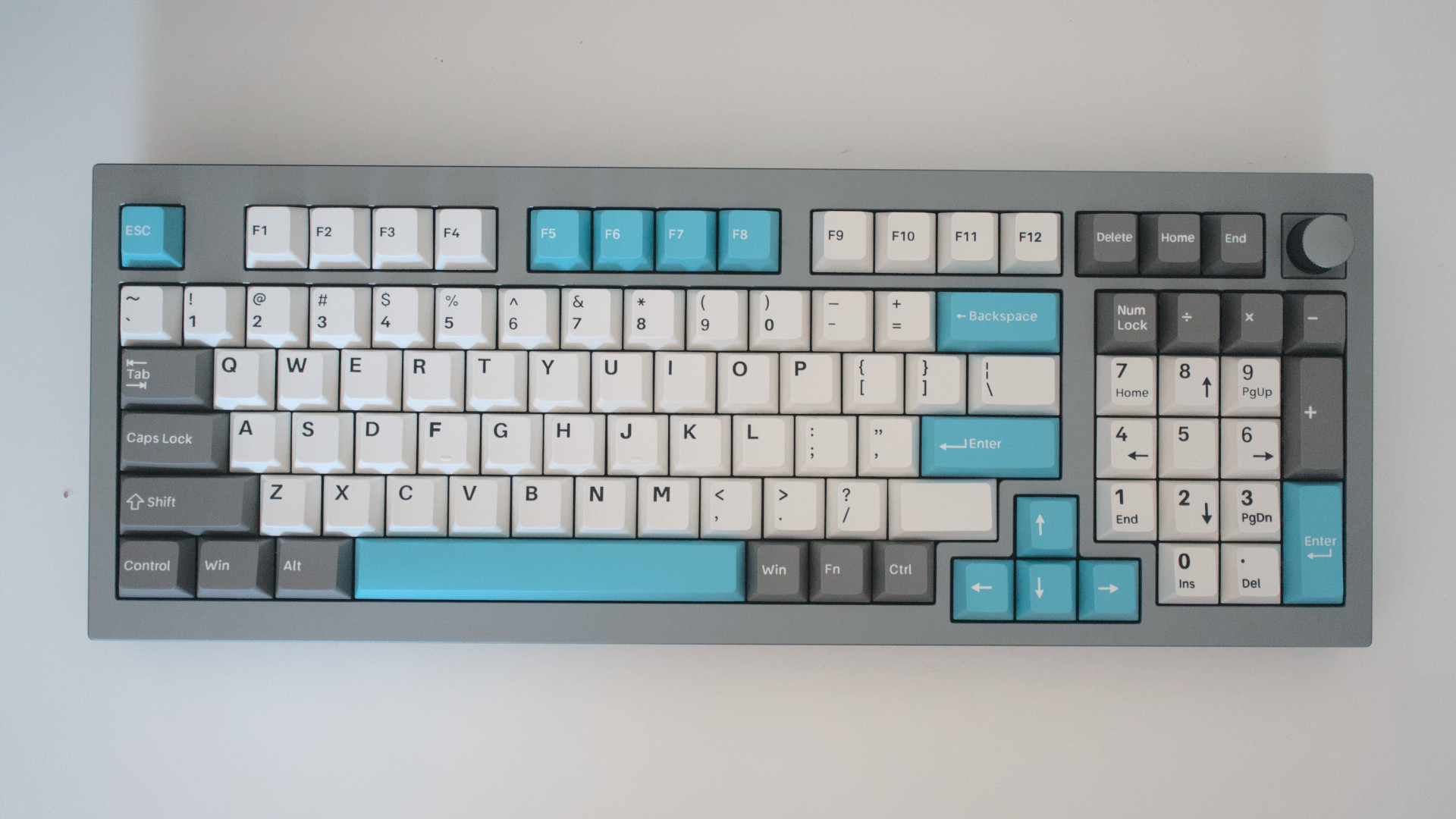
The Keychron Q5 is essentially a larger version of the Keychron Q3 I reviewed positively. There’s the same aluminum and steel construction, hot-swappable switches, USB-C port, gasket mount, and available pre-lubed Gateron G Pro switches. As aforementioned, you can customize the Keychron Q5 out the gate with the choice of a few configurations, from barebones to ready-to-go.
Like the Keychron Q3, this is one sleek-looking keyboard. It’s a little wider, thanks to the included keypad, but does mean you can play around with Microsoft Excel and Google Sheets all day long. Interestingly, the Q series from Keychron is considered the company’s more affordable collection of keyboards, even though this thing costs at least $175. But for a decent customized keyboard in the modding scene, you’re looking at $500.
Weighing in at 2.3kg, it’s a hefty keyboard thanks to the premium materials used. The same backlighting technology is used, which provides a nice under-glow effect with the top plate, which unfortunately cannot be removed should you want to use the keyboard without gazing down at the main PCB. Keychron includes everything you need to swap almost anything on the keyboard in the box, including a hex key and switch and keycap pullers.
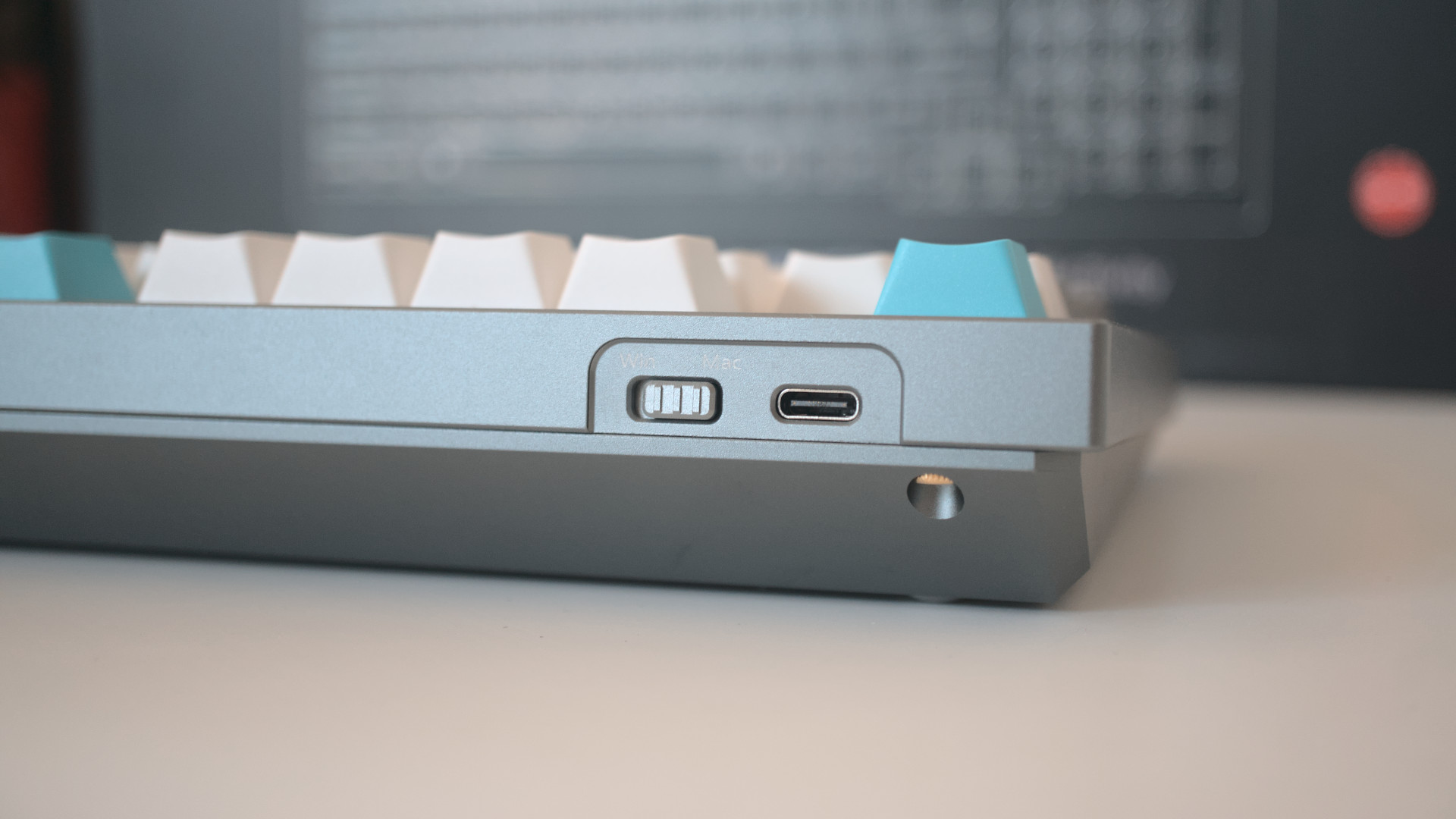
Some premium features of the Keychron Q5 include the use of two layers of foam. One is located on the steel base, and the second is just below the main board. This helps dampen any sounds caused by vibrations from pressing down keys until they bottom out. Then there are the gasket mounts that allow the internals to almost bounce as you type.
The printed circuit board (PCB) is where keypresses are registered, RGB lighting is controlled, and programmable keys are stored. This can all be configured using QMK or VIA, offering fairly powerful customization. Typing on the Keychron Q5 with Gateron G Pro switches is amazing. Gone are the days when it was Cherry MX or nothing. Alternative switches are just as good, if not better.
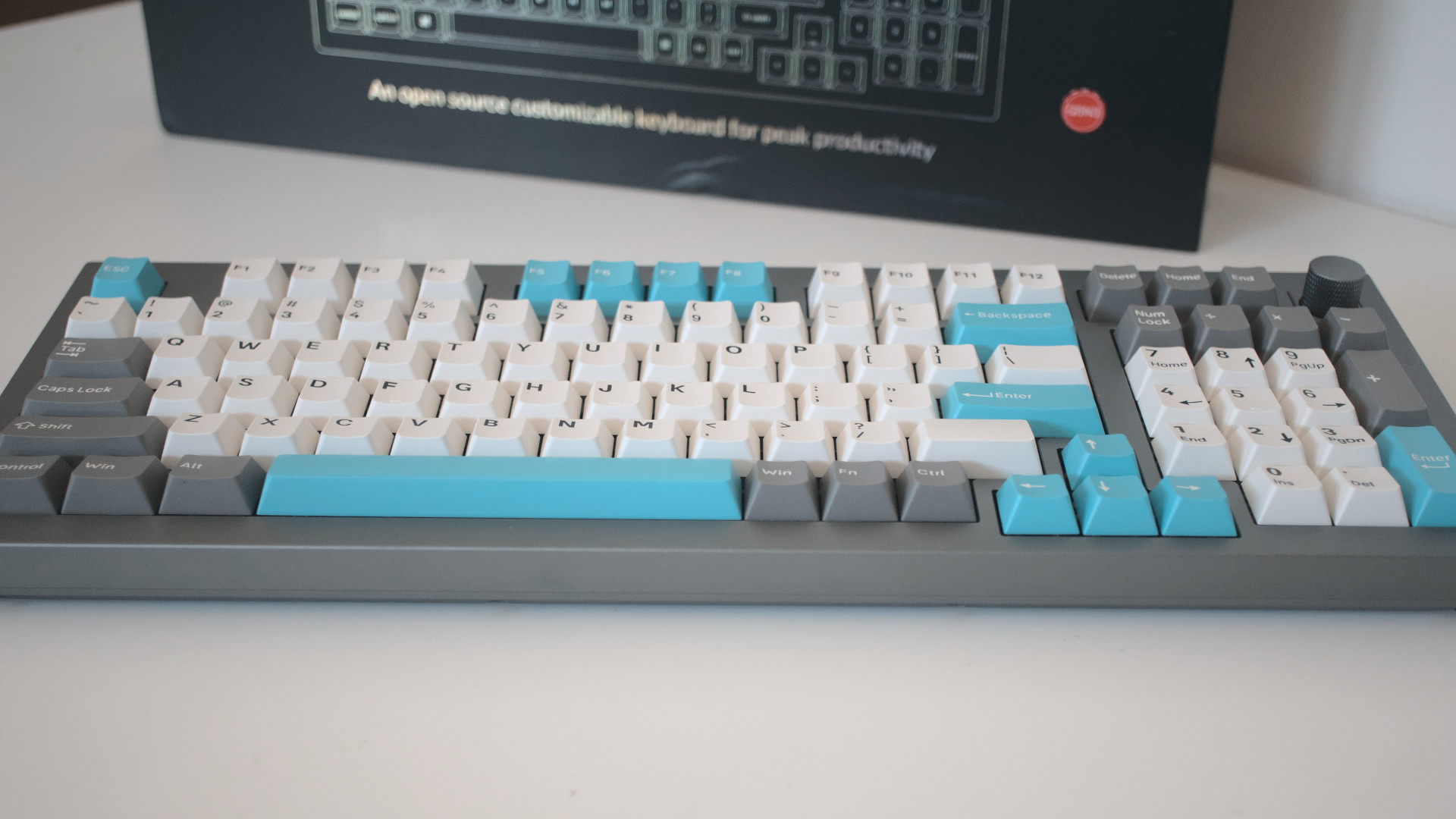
The keyboard will run just fine on any OS, regardless of the position of the physical OS switch. For instance, I primarily tested it using Linux with it set to Windows. Using QMK software, you can customize almost every part of the Keychron Q5. This keyboard offers an immense degree of customization, be it physical with components or software-based with macros, lighting, and programmable keys.
Keychron Q5: What I didn’t like
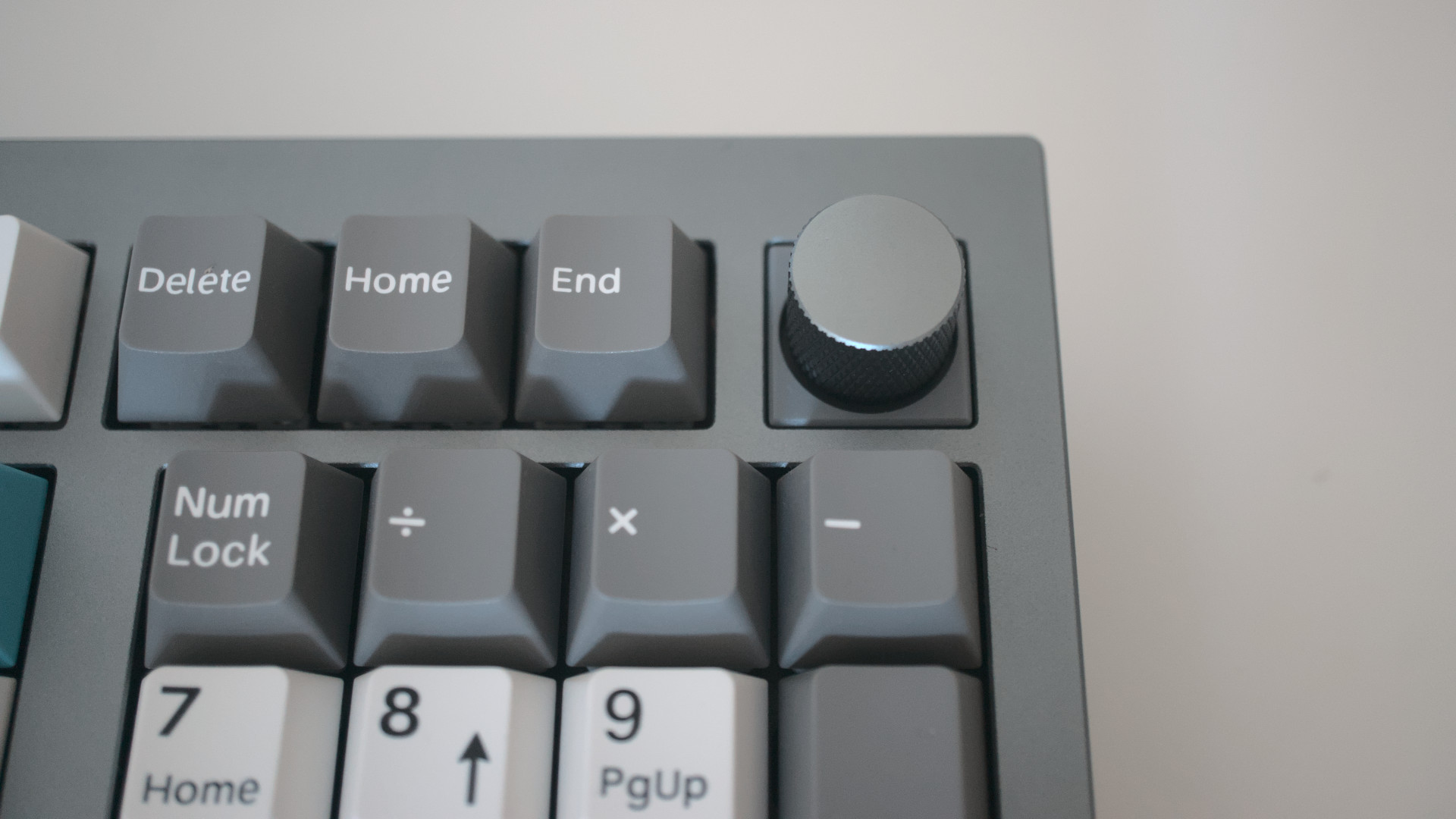
Just like on the Keychron Q3, I find the inclusion of an OS switch to be a little odd. It’s nothing major but is something I would have left out. It would have been good to see a USB pass-through instead of this physical switch, for instance. Then there’s the lack of any adjustment underneath the Keychron Q5, which may be a deal breaker for anyone who enjoys using their keyboards at a specific angle.
There’s also no wireless option, which is a letdown for those who enjoy hiding all the cabling in the world.
Keychron Q5: Competition
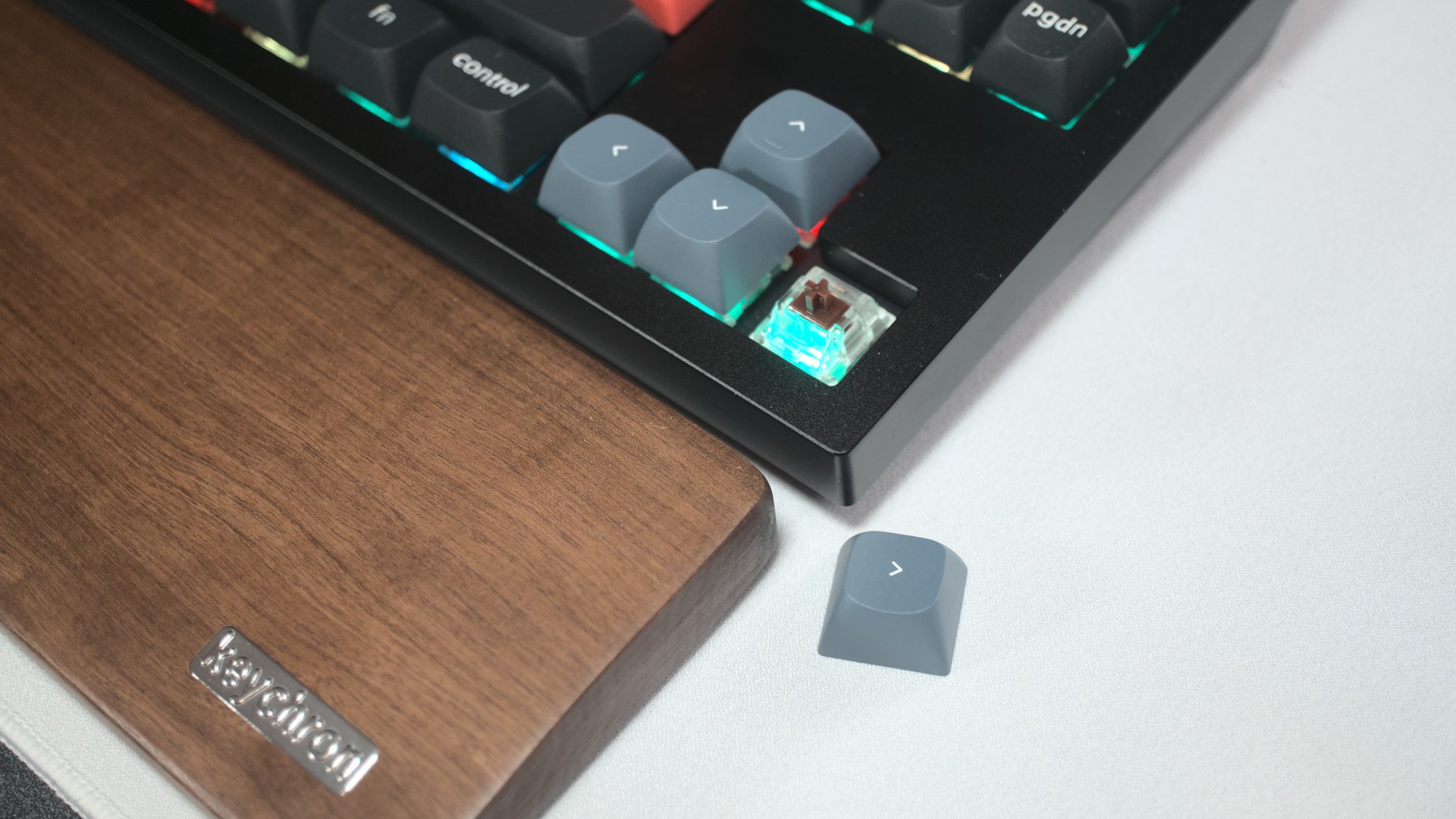
There’s a wide selection of mechanical keyboards out there. Then there’s the custom modding scene with hot-swappable switches and other replaceable standard parts. Keychron focuses on such hardware, allowing those who’ve never built their own keyboard from scratch to do so without buying incompatible parts. The aforementioned Keychron Q3 is another fine option, which cuts off the keypad.
The Drop CTRL is another great starting foundation for someone who’s new to custom mechanical keyboards. An issue with most of these keyboards is the lack of any wireless functionality. This is where something like the Akko World Tour Tokyo R2 comes into play with its fancy design and great preassembled switches. It really comes down to what you want from a mechanical keyboard.
Keychron Q5: Should you buy?
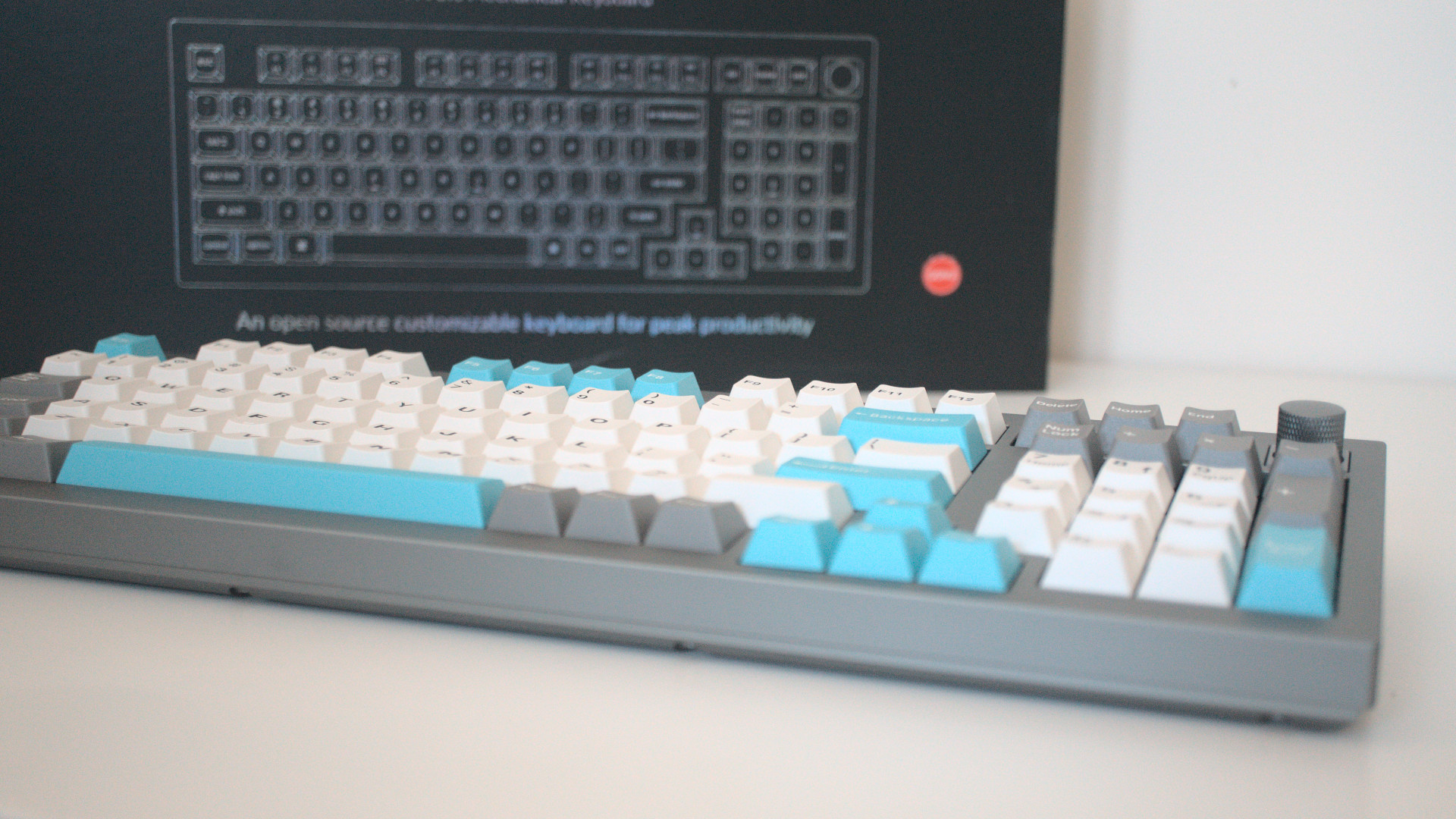
You should buy if …
- You don’t mind spending $200 on a mechanical keyboard
- You want a full keypad
- You want premium mechanical keyboard features
- You plan on using the Keychron Q5 for many years with aftermarket keycaps and switches
You shouldn’t buy if …
- You just want a basic mechanical keyboard
- You don’t feel comfortable paying $200 for a keyboard
- You won’t be swapping out the keycaps, switches, or other components
- You don’t need a keypad
The Keychron Q5 is very much similar to the Keychron Q3, but it has a keypad and some notable improvements. The dampening is better, and so too is the position of the knob. The latter is personal taste more than anything, but the smaller Q3 form factor made everything feel a little cluttered with the knob. The dampening is what makes the Keychron Q5 far better to type on, especially for longer periods of time.
If you’re just getting started with a custom mechanical keyboard and don’t know where to start, the Keychron Q5 is a solid foundation that can be tweaked later. You can install aftermarket switches, though the included Gateron G Pros are brilliant, and it’s easy to get inside the keyboard to make other changes to create the perfect keyboard for you.
It’s expensive until you learn more about what’s included, then the Keychron Q5 becomes quite the value proposition. So long as you don’t mind parting with $200 for a keyboard and want a keypad, this is one you should shortlist.

Keychron makes some excellent keyboards, and the Q5 is yet another fine example. It has plenty of premium features that make it an excellent choice for beginners and experienced keyboard modders.




